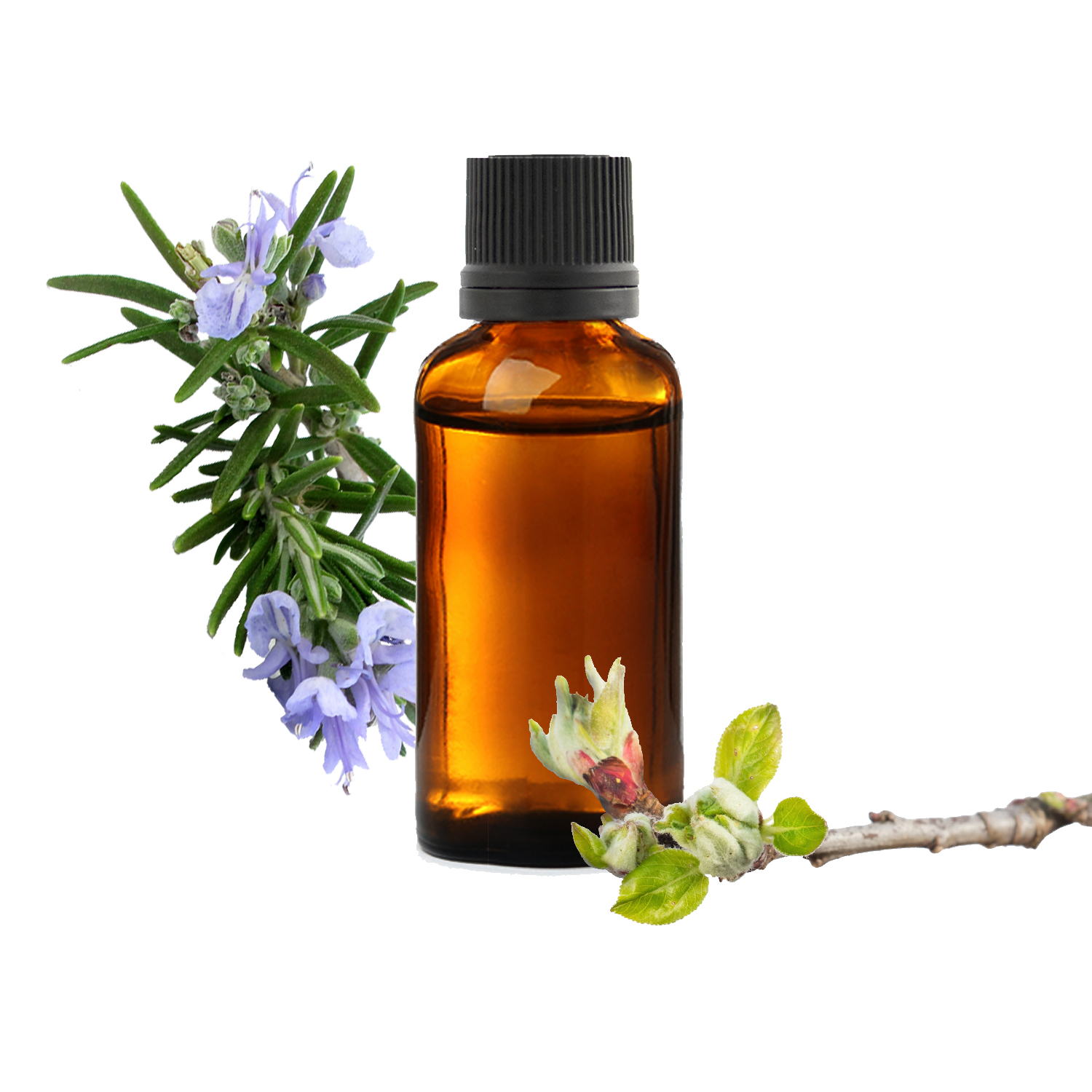
In herbal medicine, Rosemary is widely used. Its flowering tops offer a powerful essential oil but here it is its young shoots that interest us. From them, we obtain a concentrated macerate that is liver detoxifying, protective, stimulating the bile ducts and the nervous system. And that's not all, it is also useful in cases of hormonal imbalances and has antioxidant qualities. Rosemary bud macerate will be very suitable for situations of hepatitis, fatigue, intoxication, chronic allergies and reduced libido. Latin name: Rosmarinus officinalis. Part used: young shoots.
This article was updated on 19/07/2023For what problems should it be used?
-
Digestive system ++++ : Gallstones, Cholecystitis, Cirrhosis, Colitis, Biliary dyskinesia, Dyspepsia, Hepatitis, Liver failure, Crohn's disease, Hepatic steatosis
-
Metabolic system ++++ : cholesterol, detox, hypertriglyceridemia, intoxication
-
Urogenital system +++ : Excess uric acid, Decreased libido, Excess urea
-
Cutaneous system +++ : Acne, Skin allergy
-
Immune and respiratory system +++ : Respiratory allergy, Allergy
-
Nervous system +++ : Asthenia, Fatigue, Nervousness, Overwork, Memory problems
-
Blood and lymphatic system +++ : Arteriosclerosis, Atherosclerosis, Thrombosis (prevention)
How to use it alone?
Adults and adolescents : 5 to 15 drops per day in a glass of water, divided into 1 to 3 doses during the day depending on the case, 15 minutes before a meal for 3 weeks. Start with 5 drops and increase gradually:
- or one drop per day up to 15,
- i.e. 5 drops the first week, 10 the second and 15 the last.
Children over 3 years old : 1 drop per day for 10 kilos. Start with 1 drop and gradually increase.
Synergistic uses
Cholesterol
Rosemary bud macerate can be combined with rosemary bud macerate.Olivier to reduce bad cholesterol levels.
Allergy
In case of repetitive allergies, it is interesting to combine Rosemary bud macerate with that of Cassis to inhibit the release of histamines and attenuate the inflammatory reaction.
Memory problems
Rosemary can be used in combination with macerates of buds ofOlivier and D'Glutinous Alder. One is interesting for promoting good assimilation of lipids, and the other for promoting good cerebral circulation.
Main properties
-
hepato-biliary stimulant, general detoxifier, hepatoprotector :
rosemary is the liver plant par excellence. It exerts a protective, regenerating, depurative and detoxifying action. It also turns out that the buds and young shoots have a much greater hepato-protective activity than the whole plant. It is also a general detoxifier of the body. It increases the activity of the gallbladder by stimulating the production of bile (choleretic) and its evacuation (cholagogue). It is of interest in all disorders linked to liver overload or insufficiency, and promotes fat metabolism. It therefore helps lower cholesterol and triglyceride levels, stimulate the immune system, etc. It is also interesting in cases of gallstone lithiasis, but should be used at low doses in the event of an attack.
-
anti-oxidant :
in addition to detoxifying the body, Rosemary bud macerate fights against the formation of free radicals. It thus combats the risks of cellular oxidation, guaranteeing proper functioning of the organs.
-
tonic, adrenal stimulant :
rosemary bud macerate has a toning action on 2 levels: on the one hand it allows you to regain energy thanks to its detoxifying function, and on the other hand stimulates the adrenal cortex. It is therefore a nervous rebalancing and anti-senescent used in cases of overwork, to stimulate cerebral activity, or in sexual anomalies, whether female or male.
-
antiallergic, digestive protector :
in addition to being hepatoprotective, Rosemary bud macerate repairs the intestinal mucosa. It stimulates cell renewal and helps reduce permeability. It thus combats malabsorption, is useful for chronic intestinal disorders, and fights against food intolerances and allergies. It acts as a desensitizer in the case of repetitive allergies, generally caused by an overload of the liver and a weakness of the intestinal mucosa.
-
circulatory, antisclerotic :
it helps reactivate capillary circulation in the extremities in cases of predisposition to thrombosis. It also has an anti-coagulant action and increases the production of red and white blood cells. Finally, it fights against sclerosis of the vessel walls and promotes better venous return.
Precautions for use
- Rosemary bud macerate is a herbal food supplement. It does not replace a varied diet and a healthy lifestyle. It is important to keep it out of the reach of children and not to exceed the recommended daily dose. Dosages must be adapted for young children.
- Rosemary bud macerate is authorized for the whole family, except for babies under 3 years old and pregnant women.
- Store away from light and heat.
What does a good Rosemary bud macerate look like?
Botanical characteristics
- Latin name: Rosmarinus officinalis L.
- Botanical family: Lamiaceae
- Distilled part: young shoots
Composition
- Composition: Alcohol* 32%, Water, Vegetable Glycerin*, Rosemary bud extract (Rosmarinus officinalis L.)*.
Organoleptic characteristics
- Appearance: liquid - possible cloudiness
- Color: reddish brown
- Odor: characteristic, slightly alcoholic.
- Taste: alcoholic, rosemary.
Was this article helpful to you?
Average grade: 4.8 ( 610 votes)
Bibliography
Work : Piterà di Clima, F., & Nicoletti, M. (2018). Summary of gemmotherapy - Scientific foundations of Meristemotherapy. Amyris Editions.
Work : Boistard, S. (2016). Gemmotherapy - Buds for health - Practical and family guide. Terran Publishing.
Work : Andrianne, P. (2011). Treatise on gemmotherapy: Therapy using buds. Amyris Editions.
Work : Halfon, R. (2011). Gemmotherapy - Health through buds. Dangles Editions.
Work : Ledoux, F., & Guéniot, G. (2014). Phytembryotherapy: The embryo of gemmotherapy. Amyris Editions.
Work : Pineau, L. (2019). The great book of gemmotherapy. Leduc.s Éditions.


